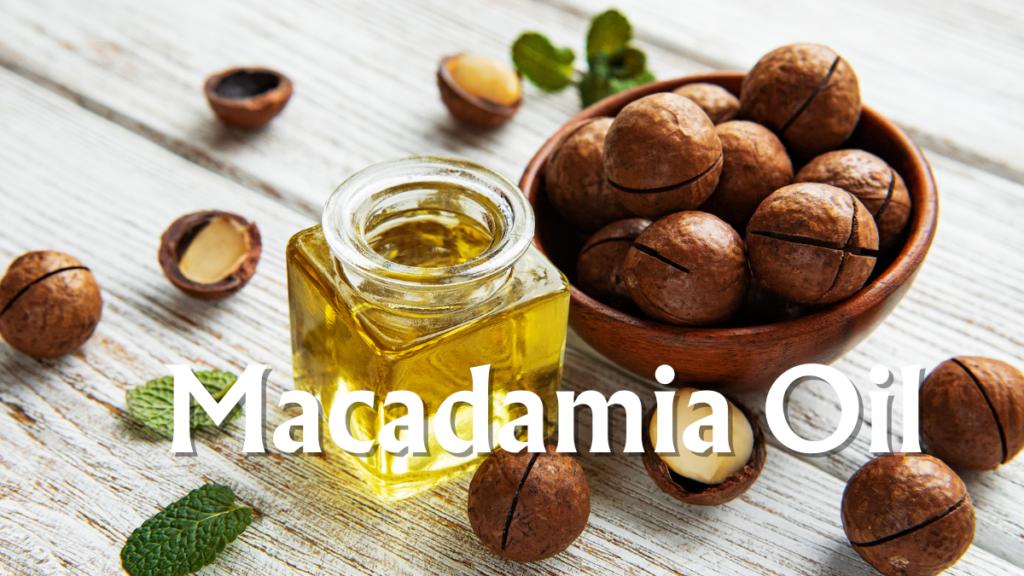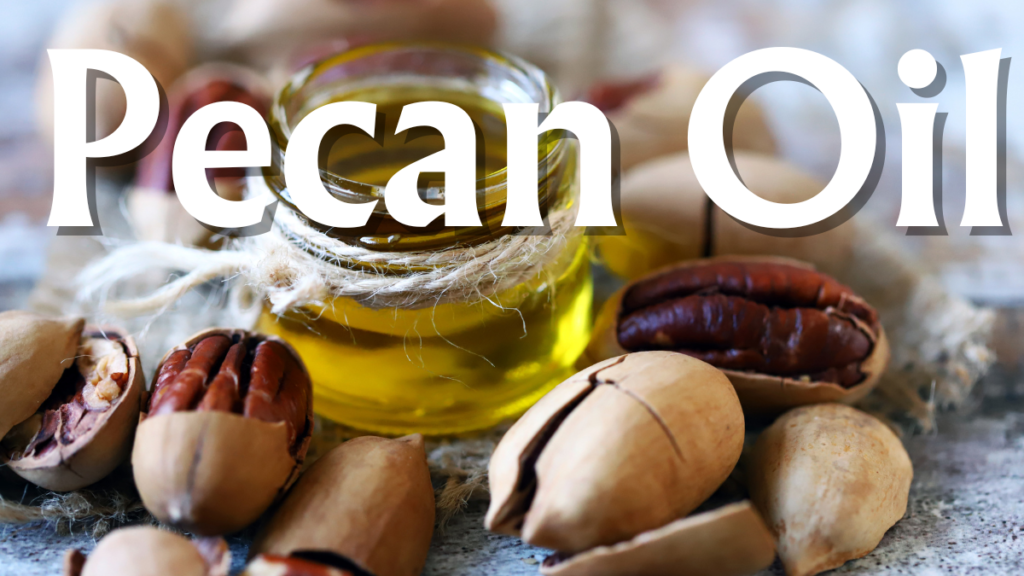Nourishing Elixirs: Exploring the 7 Rich World of Nut Oils: Almond Oil, Macadamia Oil, Mongongo Nut Oil, Pecan Oil, Pine Nut Oil, Pistachio Oil And Walnut Oil
Discover the unparalleled richness of Almond Oil, Macadamia Oil, Mongongo Nut Oil, Pecan Oil, Pine Nut Oil, Pistachio Oil, and Walnut Oil. Each of these nut oils brings a unique flavor profile and a myriad of health benefits to the table. From the buttery indulgence of Macadamia Oil to the earthy notes of Walnut Oil, embark on a journey of culinary delight and holistic well-being. Unveil the secrets and versatility of these nut oils that go beyond the kitchen, offering a blend of exquisite taste and nourishment for your body and soul.

Almond Oil: Best Cooking Oils for Healthy Food, Source, and Benefits
Introduction
Almond oil, extracted from the kernels of almonds, is a versatile and flavorful cooking oil with a range of potential health benefits. Known for its nutty taste and rich composition, almond oil has become a popular choice in both culinary and skincare applications. In this article, we’ll explore the sources, benefits, and culinary applications of almond oil.
Understanding Different Types of Cooking Oils
Almond oil stands among the diverse range of cooking oils. From olive oil to coconut oil, each type contributes distinct tastes and characteristics to various dishes. Almond oil, with its delicate nutty flavor, offers a unique addition to the culinary landscape.
Benefits of Almond Oil
1. Heart-Healthy Monounsaturated Fats
– Almond oil is rich in monounsaturated fats, which are considered heart-healthy. These fats may help lower bad cholesterol levels and reduce the risk of heart disease.
2. Rich in Antioxidants
– Almond oil contains vitamin E, an antioxidant that helps protect cells from damage caused by free radicals. Antioxidants contribute to overall skin health and immune system support.
3. Nutrient-Rich
– Almond oil is a good source of nutrients, including vitamin K, which plays a role in blood clotting, and vitamin B, which supports energy metabolism.
4. Mild Flavor Profile
– Almond oil has a delicate nutty flavor that adds a subtle richness to both sweet and savory dishes without overpowering other ingredients.
Incorporating Almond Oil into Your Culinary Repertoire
1. Salad Dressings
– Create light and flavorful salad dressings by combining almond oil with balsamic vinegar, Dijon mustard, and a touch of honey. The nutty notes enhance the freshness of salads.
2. Drizzling Over Roasted Vegetables
– Add a nutty flavor to roasted vegetables by drizzling them with almond oil before baking. This enhances the natural sweetness of the vegetables and adds a rich dimension.
3. Baking and Sauteing
– Use almond oil as a substitute for butter or vegetable oil in baking recipes. Its mild flavor complements sweet treats like cakes and cookies. Additionally, use it for sautéing vegetables or proteins for a subtle nutty taste.
4. Homemade Nut Butter
– Create your almond butter by blending almond oil with roasted almonds, a touch of honey, and a pinch of salt. Customize the texture and sweetness to your liking.
Considerations for Almond Oil Usage
1. Quality and Purity
– Choose high-quality, food-grade almond oil from reputable sources to ensure purity and safety for culinary use. Look for cold-pressed or expeller-pressed varieties for maximum flavor.
2. Heat Sensitivity
– While almond oil is suitable for light cooking and sautéing, it has a lower smoke point compared to some other cooking oils. Avoid using it for high-heat frying to prevent the oil from breaking down and losing its nutritional benefits.
Conclusion
Almond oil, with its heart-healthy fats, antioxidants, and delicate nutty flavor, is a versatile and nutritious addition to the kitchen. From salads to baked goods, its subtle richness enhances a variety of dishes.
FAQs:
1. Can almond oil be used for high-heat cooking?
– Almond oil is best suited for light cooking and sautéing due to its lower smoke point. Avoid using it for high-heat frying to preserve its delicate flavor and nutritional benefits.
2. Is almond oil suitable for individuals with nut allergies?
– Individuals with nut allergies should exercise caution when using almond oil. While it is processed to remove proteins that can cause allergies, it’s advisable to consult with a healthcare professional if there are concerns.
3. Can almond oil be used in sweet dishes?
– Yes, almond oil adds a subtle nutty flavor to sweet dishes, making it a great choice for baking cakes, cookies, and other desserts.
4. What is the difference between refined and unrefined almond oil?
– Refined almond oil has a milder flavor and a higher smoke point, making it suitable for various cooking methods. Unrefined almond oil retains a stronger nutty flavor and is better suited for dishes where the nutty taste is desired.
5. Does almond oil provide any health benefits when used in cooking?
– Almond oil is rich in heart-healthy monounsaturated fats and antioxidants, contributing to overall health. Its use in cooking can be a nutritious choice when incorporated as part of a balanced diet.
Macadamia Oil: A Mild Nutty Marvel with a High Smoke Point
Introduction
Macadamia oil, pressed from the nuts of the macadamia tree, stands out for its mild nutty flavor and impressive high smoke point. In this article, we’ll explore the delightful characteristics, culinary uses, and benefits of its high smoke point in various cooking methods.

Characteristics of Macadamia Oil
1. Mild Nutty Flavor
– Macadamia oil boasts a mild and delicate nutty flavor, adding a subtle touch to dishes without overwhelming the palate. This makes it a versatile choice for both savory and sweet applications.
2. High Smoke Point
– One of the key features of macadamia oil is its high smoke point. This refers to the temperature at which the oil begins to break down and emit smoke. Macadamia oil’s high smoke point makes it suitable for various cooking methods, including frying and sautéing.
Culinary Uses of Macadamia Oil
1. Stir-Frying and Sautéing
– Take advantage of the high smoke point of macadamia oil by using it for stir-frying and sautéing. Its stability at high temperatures helps maintain the integrity of the oil and the flavors of the ingredients.
2. Grilling and Roasting
– Brush macadamia oil onto meats, vegetables, or seafood before grilling or roasting. The mild nutty flavor can enhance the taste, and the high smoke point allows for optimal results in these cooking methods.
3. Baking and Salad Dressings
– Incorporate macadamia oil into baking recipes and salad dressings. Its mild flavor won’t overpower the dish, and the high smoke point ensures it won’t break down in the oven.
Benefits of Macadamia Oil’s High Smoke Point
1. Preserving Nutritional Value
– Cooking at high temperatures often requires oils with high smoke points to maintain the nutritional value of the ingredients. Macadamia oil’s stability helps preserve the health benefits of the dish.
2. Achieving Crispy Textures
– Use macadamia oil to achieve crispy textures in fried and deep-fried dishes. Its high smoke point allows for proper cooking without the oil breaking down and imparting off-flavors.
Considerations for Macadamia Oil Usage
1. Storage
– Store macadamia oil in a cool, dark place to prevent oxidation and maintain its freshness. Ensure the container is tightly sealed.
2. Substitute for Other Oils
– Consider using macadamia oil as a substitute for other oils in recipes that require high-heat cooking. Its high smoke point makes it a valuable alternative.
Conclusion
Macadamia oil, with its mild nutty flavor and high smoke point, adds a touch of sophistication to various culinary creations. Whether you’re stir-frying, grilling, or baking, this versatile oil proves to be a flavorful and practical choice in the kitchen.
FAQs:
1. Can macadamia oil be used for deep frying?
– Yes, macadamia oil is suitable for deep frying due to its high smoke point. It allows for the achievement of crispy textures in fried foods without compromising the oil’s integrity.
2. How does the mild nutty flavor of macadamia oil complement dishes?
– The mild nutty flavor of macadamia oil enhances the overall taste of dishes without overpowering them. It adds a subtle richness that complements both savory and sweet recipes.
3. Is macadamia oil a heart-healthy option?
– Macadamia oil is considered a heart-healthy option due to its monounsaturated fatty acid content. It can be part of a balanced diet when used in moderation.
Mongongo Nut Oil: A South African Treasure High in Vitamin E
Introduction
Mongongo nut oil, extracted from the seeds of the Schinziophyton rautanenii tree indigenous to South Africa, is a culinary and skincare gem. Renowned for its rich vitamin E content, this oil adds a unique touch to both the kitchen and the beauty routine. In this article, we’ll explore the characteristics, culinary uses, and skincare benefits of Mongongo nut oil.

Characteristics of Mongongo Nut Oil
1. Abundant in Vitamin E
– Mongongo nut oil is notably high in vitamin E, an antioxidant renowned for its skin-nourishing and protective properties. This makes the oil a valuable addition to both culinary and skincare applications.
2. Mild Nutty Flavor
– The oil carries a mild nutty flavor, making it versatile for various culinary uses. Its subtlety allows it to enhance dishes without overpowering other flavors.
Culinary Uses of Mongongo Nut Oil
1. Salad Dressings and Marinades
– Incorporate Mongongo nut oil into salad dressings and marinades. Its mild nutty flavor can add depth to fresh greens and enhance the taste of marinated proteins.
2. Drizzling Over Finished Dishes
– Drizzle Mongongo nut oil over finished dishes just before serving. This adds a final touch to soups, roasted vegetables, or grilled meats, enhancing the overall flavor profile.
3. Baking and Cooking
– Use Mongongo nut oil in baking recipes or for light cooking. Its mild taste complements both sweet and savory dishes, making it a versatile choice in the kitchen.
Skincare Benefits of Mongongo Nut Oil
1. Rich in Antioxidants
– The high vitamin E content in Mongongo nut oil provides antioxidant benefits, helping protect the skin from oxidative stress and environmental damage.
2. Moisturizing and Nourishing
– Mongongo nut oil is deeply moisturizing and nourishing for the skin. It can be used as a standalone facial or body oil to promote hydration and suppleness.
3. Protective Barrier
– When applied topically, Mongongo nut oil forms a protective barrier on the skin, aiding in retaining moisture and preventing dehydration.
Considerations for Mongongo Nut Oil Usage
1. Storage
– Store Mongongo nut oil in a cool, dark place to preserve its vitamin E content and prevent oxidation. Ensure the container is tightly sealed to maintain freshness.
2. Skin Patch Test
– Before using Mongongo nut oil on the skin, perform a patch test to ensure there are no adverse reactions. While it is generally well-tolerated, individual skin sensitivities can vary.
Conclusion
Mongongo nut oil, with its richness in vitamin E and mildly nutty flavor, is a South African treasure that extends its benefits to both culinary and skincare realms. From enhancing the taste of dishes to nourishing and protecting the skin, this versatile oil adds a touch of luxury to everyday routines.
FAQs:
1. Can Mongongo nut oil be used for deep frying?
– Mongongo nut oil’s mild flavor and high vitamin E content make it more suitable for drizzling over finished dishes or light cooking rather than deep frying.
2. Is Mongongo nut oil suitable for all skin types?
– Mongongo nut oil is generally suitable for various skin types, including dry and sensitive skin. However, individual reactions can vary, so it’s advisable to perform a patch test before extensive use.
3. Can Mongongo nut oil be used as a hair treatment?
– Yes, Mongongo nut oil can be applied to the hair as a nourishing treatment. Its moisturizing properties can help improve hair texture and shine.
Pecan Oil: A Culinary Delicacy Requiring Fresh Pecans
Introduction
Pecan oil, extracted from the nuts of the pecan tree (Carya illinoinensis), is highly prized in the culinary world for its delicate flavor and versatility. However, the quality of pecan oil is intricately tied to the freshness of the pecans used in its production. In this article, we’ll explore the characteristics, culinary applications, and importance of using fresh pecans for high-quality pecan oil.

Characteristics of Pecan Oil
1. Delicate Flavor Profile
– Pecan oil is celebrated for its delicate and nutty flavor, which adds a subtle richness to various dishes without overpowering the palate.
2. Versatility in Culinary Uses
– Known for its high smoke point, pecan oil is versatile in the kitchen. It can be used for sautéing, frying, baking, and as a flavorful addition to salad dressings and marinades.
Culinary Uses of Pecan Oil
1. Sautéing and Frying
– Pecan oil’s high smoke point makes it an excellent choice for sautéing and frying. It imparts a light nutty essence to the ingredients while maintaining their integrity.
2. Baking and Roasting
– Incorporate pecan oil into baking and roasting recipes. Its mild flavor enhances the overall taste of baked goods, vegetables, and roasted meats.
3. Salad Dressings
– Use pecan oil as a base for salad dressings. Its delicate nutty notes can elevate the flavors of fresh greens and vegetables.
The Importance of Fresh Pecans for Quality Pecan Oil
1. Preservation of Flavor and Nutrients
– Using fresh pecans in the oil extraction process is crucial for preserving the natural flavor and nutritional benefits of the pecans. Freshness ensures that the oil captures the true essence of the nuts.
2. Prevention of Rancidity
– Pecan oil is susceptible to rancidity if the pecans used are not fresh. Fresh pecans contain fewer free fatty acids, minimizing the risk of the oil turning rancid and ensuring a longer shelf life for the oil.
3. Enhanced Aroma and Complexity
– Fresh pecans contribute to the oil’s nuanced aroma and flavor complexity. The distinct characteristics of the pecans are more pronounced in the oil when they are fresh.
Considerations for Pecan Oil Usage
1. Storage
– Store pecan oil in a cool, dark place to preserve its freshness and prevent oxidation. Ensure the container is tightly sealed to maintain the quality of the oil.
2. Use in Moderation
– While pecan oil adds delightful flavor, use it in moderation to balance the overall taste of the dish. This allows the subtle nutty notes to enhance the culinary experience without overwhelming the palate.
Conclusion
Pecan oil, valued for its delicate flavor and culinary versatility, is a true culinary delicacy. The use of fresh pecans in the oil extraction process is paramount to unlocking the full potential of this exquisite oil, ensuring it retains its natural richness and nutritional benefits.
FAQs:
1. Can pecan oil be used for deep frying?
– Yes, pecan oil’s high smoke point makes it suitable for deep frying. It imparts a light nutty flavor to the fried items, enhancing their overall taste.
2. How can one identify fresh pecan oil?
– Look for pecan oil from reputable producers who prioritize using fresh pecans. Additionally, check for a clear, clean aroma and a mild, nutty flavor profile, which are indicators of fresh and high-quality pecan oil.
3. Is pecan oil a heart-healthy option?
– Pecan oil is a heart-healthy option due to its monounsaturated fat content. When used as part of a balanced diet, it can contribute to overall cardiovascular well-being.
Pine Nut Oil: A Culinary Elixir with Health Benefits
Introduction
Pine nut oil, extracted from the kernels of pine nuts (Pinus spp.), is a gourmet delight known for its distinctive flavor and potential health benefits. In this article, we’ll explore the characteristics, culinary uses, and nutritional advantages of pine nut oil.

Characteristics of Pine Nut Oil
1. Delicate and Nutty Flavor
– Pine nut oil boasts a delicate and nutty flavor, with hints of sweetness. This nuanced taste makes it a prized ingredient in various culinary applications.
2. Light Golden Color
– The oil typically exhibits a light golden color, adding an appealing visual element to dishes.
Culinary Uses of Pine Nut Oil
1. Salad Dressings and Marinades
– Pine nut oil is a flavorful addition to salad dressings, bringing a subtle nuttiness to fresh greens. It can also be used in marinades for meats and vegetables.
2. Drizzling Over Dishes
– Enhance the taste of finished dishes by drizzling pine nut oil over pasta, grilled vegetables, or roasted meats. Its delicate flavor adds a final touch to elevate the overall culinary experience.
3. Dipping Oil
– Serve pine nut oil as a dipping oil for bread. Its unique taste and aroma make it a delightful accompaniment to artisanal bread or appetizers.
Nutritional Benefits of Pine Nut Oil
1. Rich in Monounsaturated Fats
– Pine nut oil is high in monounsaturated fats, particularly oleic acid. These heart-healthy fats may contribute to cardiovascular well-being.
2. Source of Vitamin E
– The oil contains vitamin E, an antioxidant that plays a role in protecting cells from oxidative damage. Vitamin E is essential for skin health and overall immune support.
3. Potential Appetite Suppression
– Some studies suggest that pine nut oil may have appetite-suppressing properties, potentially aiding in weight management.
Considerations for Pine Nut Oil Usage
1. Storage
– Store pine nut oil in a cool, dark place to prevent oxidation and maintain its freshness. Ensure the container is tightly sealed to preserve the delicate flavors.
2. Use in Moderation
– Due to its distinct flavor, use pine nut oil in moderation to avoid overpowering the dish. Its subtle notes can enhance the taste when used thoughtfully.
Conclusion
Pine nut oil, with its delicate flavor and potential health benefits, is a culinary gem that adds a touch of sophistication to various dishes. Whether drizzled over salads, used in marinades or enjoyed as a dipping oil, pine nut oil brings a unique and delightful dimension to the culinary world.
FAQs:
1. Is pine nut oil suitable for high-heat cooking?
– Pine nut oil has a relatively low smoke point, so it is best used for low to medium-heat cooking or as a finishing oil. Using it for high-heat cooking may affect its delicate flavor.
2. Can pine nut oil be used for skin care?
– While pine nut oil is primarily used in culinary applications, its vitamin E content may have potential benefits for the skin. However, specific skincare products are more commonly formulated for topical use.
Pistachio Oil: The Green Elixir of Distinctive Flavor
Introduction
Pistachio oil, extracted from the nuts of the Pistacia vera tree, is a culinary gem celebrated for its strong flavor and unique green hue. In this article, we’ll delve into the characteristics, culinary uses, and vibrant appeal of pistachio oil.

Characteristics of Pistachio Oil
1. Strong and Distinctive Flavor
– Pistachio oil is renowned for its intense and distinct flavor, capturing the essence of roasted pistachios. This bold taste makes it a standout ingredient in various culinary creations.
2. Vibrant Green Color
– The oil exhibits a striking green color, adding a visually appealing element to dishes. This unique hue enhances the overall presentation of both sweet and savory recipes.
Culinary Uses of Pistachio Oil
1. Salad Dressings and Marinades
– Pistachio oil is a flavorful addition to salad dressings, infusing a robust pistachio essence into fresh greens. It can also be used in marinades for meats, poultry, or vegetables.
2. Drizzling Over Dishes
– Elevate the taste of finished dishes by drizzling pistachio oil over pasta, risotto, or grilled seafood. Its strong flavor adds a bold and nutty note to enhance the overall culinary experience.
3. Dipping Oil
– Serve pistachio oil as a dipping oil for artisanal bread or as a flavorful accompaniment to appetizers. Its rich taste makes it a delightful complement to a variety of bread-based dishes.
Versatility in Culinary Applications
1. Baking and Desserts
– Incorporate pistachio oil into baking recipes for cakes, cookies, or pastries. Its bold flavor can impart a distinctive pistachio profile to sweet treats.
2. Sautéing and Roasting
– Use pistachio oil for sautéing vegetables or roasting meats. Its strong flavor holds up well during cooking, contributing a robust pistachio essence to the final dish.
Considerations for Pistachio Oil Usage
1. Storage
– Store pistachio oil in a cool, dark place to preserve its vibrant color and prevent oxidation. Ensure the container is tightly sealed to maintain the oil’s freshness.
2. Use Sparingly
– Due to its intense flavor, pistachio oil is best used sparingly to avoid overwhelming the dish. A small amount can go a long way in enhancing the overall taste.
Conclusion
Pistachio oil, with its distinctive green color and robust flavor, is a culinary treasure that brings a burst of personality to various dishes. Whether used in salad dressings, drizzled over entrees, or incorporated into baking, this oil adds a touch of gourmet flair to the kitchen.
FAQs:
1. Can pistachio oil be used for high-heat cooking?
– Pistachio oil has a relatively low smoke point, so it is best suited for low to medium-heat cooking or as a finishing oil. Using it for high-heat applications may affect its flavor.
2. Does pistachio oil retain its green color after cooking?
– The vibrant green color of pistachio oil may fade slightly during cooking, but it can still impart its distinctive flavor to the dish. Using it as a finishing oil preserves its visual appeal.
Walnut Oil: A Flavorful Elixir and Artistic Tradition
Introduction
Walnut oil, derived from the nuts of the Juglans regia tree, not only serves as a culinary delight with its distinctive flavor but also holds historical significance as a medium for Renaissance painters. In this article, we’ll explore the characteristics, culinary uses, and artistic legacy of walnut oil.

Characteristics of Walnut Oil
1. Rich and Nutty Flavor
– Walnut oil is renowned for its rich, nutty flavor that adds a distinctive taste to various dishes. Its nuanced profile makes it a sought-after ingredient in both savory and sweet culinary creations.
2. Light Amber Color
– The oil typically exhibits a light amber color, adding warmth and depth to dishes.
Culinary Uses of Walnut Oil
1. Salad Dressings and Vinaigrettes
– Walnut oil shines in salad dressings and vinaigrettes, imparting a delightful nutty essence to fresh greens. Its flavor pairs exceptionally well with salads containing fruits, cheese, or roasted vegetables.
2. Drizzling Over Finished Dishes
– Elevate the taste of finished dishes by drizzling walnut oil over pasta, grains, or grilled meats. Its rich flavor enhances the overall culinary experience.
3. Baking and Desserts
– Incorporate walnut oil into baking recipes for bread, cakes, and pastries. Its nutty notes contribute a distinct flavor, especially in recipes where the taste of walnuts is desired.
Historical Use in Art: Renaissance Painters and Walnut Oil
1. Oil Painting Medium
– Walnut oil has a long history as a medium in oil painting. Renaissance painters, including renowned artists like Leonardo da Vinci and Albrecht Dürer, used walnut oil as a binder for pigments in their oil paints.
2. Slow Drying Characteristics
– Walnut oil is appreciated by artists for its slow drying characteristics, allowing painters more time to work on their masterpieces. The oil imparts a lustrous finish to paintings.
Considerations for Walnut Oil Usage
1. Storage
– Store walnut oil in a cool, dark place to preserve its flavor and prevent oxidation. Ensure the container is tightly sealed to maintain the oil’s freshness.
2. Use as a Finishing Oil
– Due to its delicate flavor, walnut oil is often used as a finishing oil to retain its full nutty profile. Add it just before serving to maximize its impact.
Conclusion
Walnut oil, with its rich flavor and historical significance in art, is a versatile and cherished ingredient in both the kitchen and the world of fine arts. Whether enhancing the taste of salads or contributing to the legacy of oil painting, walnut oil stands as a testament to the enduring role of natural resources in human creativity.
FAQs:
1. Can walnut oil be used in place of other cooking oils in recipes?
– Yes, walnut oil can be used as a substitute for other cooking oils in various recipes. Its distinct flavor makes it particularly well-suited for salads, dressings, and certain baked goods.
2. Is walnut oil suitable for high-heat cooking?
– Walnut oil has a relatively low smoke point, so it is best used for low to medium-heat cooking or as a finishing oil. Using it for high-heat applications may affect its flavor and nutritional composition.
3. Can artists still use walnut oil for oil painting today?
– Yes, artists continue to use walnut oil as a painting medium. It remains a popular choice for those seeking a slow-drying, luminous finish in their oil paintings.
In conclusion, the diverse and enriching world of nut oils invites us to savor not only the delightful tastes they bring to our culinary creations but also the holistic well-being they offer. From the velvety smoothness of Macadamia Oil to the earthy depth of Walnut Oil, each nut oil introduces a unique character to our dishes and provides a range of health benefits. Whether it’s the rich nutrients, distinctive flavors, or the potential skin and hair care secrets these oils hold, incorporating them into our daily lives adds a touch of indulgence and nourishment. So, let the exploration of these nourishing elixirs become a delightful and healthful part of your culinary and wellness journey.
https://en.wikipedia.org/wiki/List_of_vegetable_oils
https://en.wikipedia.org/wiki/Fatty_acid_ratio_in_food#Nuts_and_seeds
- Jamaican Cobnut Oil: A Sweet Elixir from Omphalea triandra And Hazelnut Oil: A Flavorful Elixir and Skin Care Secret
- Healing Elixirs: Unveiling the 7 Medicated Best Oils for Health – Lemon, Clove, Lavender, Peppermint, Amla, Neem, and Cashew (Part 2)
- Healing Elixirs: Unveiling the 7 Medicated Best Oils for Health – Lemon, Clove, Lavender, Peppermint, Amla, Neem, and Cashew (Part 1)
- Fish Oil: Best Cooking Oils for Healthy Food, Source, and Benefits (Part 6)
- 5 Best Cooking Oils for Healthy Food, Source, and Benefits (Part 5) Olive Oil, Coconut Oil, Mustard Oil, Sunflower Oil, Peanut Oil






